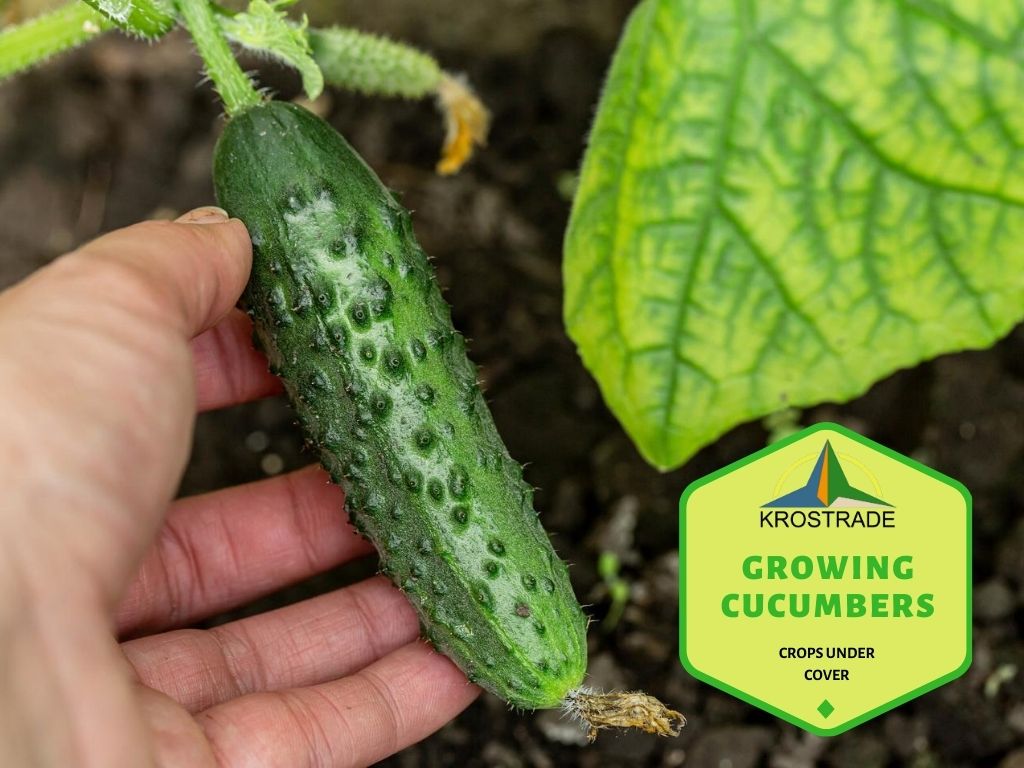Growing cucumbers in Southern California is a lot easier than you’d think. Whether you eat it as a pickle, toss it in your salad, or dip it in mayo, cucumbers are one of the most versatile fruits that’s easy to add in any diet. Cucumbers are high in nutrients, loaded with antioxidants, and made of 96% water.
It’s so good for you that eating a cup of cucumber gives you 4% of your daily potassium, 4% of your daily vitamin C, and 3% of your daily fiber. Fortunately, you’ll be able to enjoy eating cucumbers anytime because growing cucumbers in Southern California is easy.

Tips For Growing Cucumbers In Southern California
If you’re planning to grow cucumbers in Southern California, be sure to keep these tips in mind:
Plan carefully
While cucumbers grow well in Southern California, they can be fussy. They grow best in sunny areas with a temperature of 55 to 85 degrees Fahrenheit.
Cucumbers tend to be sensitive and stressed if the temperatures are below 50 degrees Fahrenheit and above 85 degrees Fahrenheit. It’s best to plant cucumber seeds outdoors at the beginning of April or May until July or August in Southern California.
Avoid planting into new or uncultivated soil
Don’t plant your cucumbers in new soil or in areas that have been bare for a few years. Instead, you can try planting them in large containers or raised beds.
Make sure to place your cucumber plants in areas with plenty of sun exposure. You can create raised beds directly on infertile soil, using a half-inch hardware cloth as a barrier to repel gophers.
Proper plant spacing
It’s important to observe proper plant spacing to promote air circulation and prevent wetting leaves. For plants in Southern California, leaf mildews can be a great issue.
If you have enough space, it’s best to plant cucumbers widely. It also helps to water your plants using drip irrigation instead of using sprinklers.
Companion Plants For Cucumbers
Companion planting can do wonders for your garden. When done right, it can help prevent harmful pests, enhancing soil nutrients, water conservation, and nitrogen fixation. Here are some of the plants you can plant near your cucumbers:
Jalapeño peppers
If you want to save space, you can plant vining vegetable plants with bush-type plants. As a result, cucumbers and peppers are great companions.
Both plants thrive in the same growing conditions, and even co-exists in the same bed. You can plant your cucumber vertically and the peppers in front of it.
Legumes like beans, corn, and peas, can increase the nitrogen content in the soil. The roots of the legumes can colonize the Rhizobium bacteria and absorb 20% of the sugar produced by the plant; as a result, it turns into nitrogen.
The remaining nitrogen that hasn’t been absorbed by the legume is released into the soil as the plant decomposes. Nitrogen will seep into the soil and will benefit nearby companion plants. Other companion plants for cucumbers include beets, onions, carrots, and radishes.
Flowers
Planting nasturtiums help repel insects that feed on your cucumbers. Marigold flowers can prevent beetles that can also harm your plants. Aside from these flowers, sunflowers are a great companion for most vegetables and herbs.
Herbs
Dill is a great companion plant for cucumbers because it attracts helpful insects like ladybugs and deters harmful ones like aphids and cabbage months. Oregano is a well-known companion plant for repelling insects.
You can plant these near your cucumbers to protect them from critters. Other herbs you can plant include chives, catnip, and tansy.
Plants You Shouldn’t Plant Near Cucumbers
Cucumbers grow well with most types of plants. However, there are three types of plants you shouldn’t grow near your cucumber: melons, potatoes, and aromatic herbs (except dill).
Potatoes
If you’ve planted potatoes before, you might have noticed that they are heavy feeders. Growing potatoes near your cucumbers may affect the quality and size of your cukes.
Aromatic herbs
You shouldn’t plant aromatic herbs like basil next to cucumbers. Also, sage can hamper the growth of your plants.
Peppermint and mints, in general, grow well since they’re a sprawling perennial. If you plan to grow mints, make sure to place it far from your cucumbers.
Melons
Harmful insects that like to munch on melons also like to eat cucumbers. If you plant melons near your cucumbers, you can expect to attract insects that can destroy your crop.
The Benefits Of Growing Cucumbers In A Greenhouse
Investing in a cost-effective, yet high-quality greenhouse can be one of the best decisions you’ll make. Growing cucumbers in a greenhouse can lower the risk of plant diseases, repel insects, and create an ideal environment for your plants. With that said, here are some of the benefits of growing plants in a greenhouse:
Prevent harmful insects and diseases
As mentioned, growing cucumbers in a greenhouse can prevent diseases from spreading and harmful insects from eating your crops. If you leave them out in the open, your plants are more susceptible to harm.
Customizable
You can easily customize your greenhouse if you’re planning to grow different types of crops. For example, dividing your greenhouse into two and installing a cooling and heating ventilator allows you to grow cool weather and warm weather plants at the same time. Obviously, this wouldn’t be possible if you plant it in your garden.
Create an ideal plant environment
Plants need the right amount of light, air, space, and water to grow healthy. Without a favorable climate, you won’t get the crop that you’re hoping for. By customizing your greenhouse, you’ll be able to create an ideal environment for your plants.
Cost-effective
In case you’re not aware, buying a greenhouse upfront may be costly, but investing in one will save you a lot of money in the long run. You’ll save money on pest infestation; earn more in getting high yields and growing different crops.
